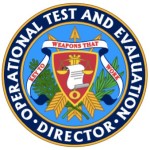Unmanned aerial vehicles, from large, long range aircraft to small tactical drones, have been a reliable tool for the military for years, but they still have weaknesses, according to the annual report to Congress by J. Michael Gilmore, director of the Defense Department’s office of Operational Test & Evaluation (OT&E). Here’s a summary of what OT&E had to say about some of the military’s most common UAVs.
RQ-21A Blackjack
The report was extremely blunt in its assessments of the catapult-launched Blackjack used by both the Navy and Marine Corps. According to the report, Marine Corps commanders use the Blackjack to ashore units with ISR capabilities.
In the initial operational test and evaluation report, from June 2015, OT&E concluded that the Blackjack was adequate and used in accordance with an approved test plan, but was not operationally effective or operationally suitable, and has exploitable cybersecurity vulnerabilities.
Additionally, a detachment equipped with Blackjacks was not effective in supporting the ground commander’s mission due to an inability to have unmanned aircraft arrive on state at designated times and remain during the tasked period. Communications relay payloads are constrained by a single frequency, the report found, limiting commanders’ tactical flexibility. Operators cannot change frequencies once the aircraft is airborne.
The report recommends, among other things, that the Navy should improve electro-optical sensor resolution to increase the probability of correct classification for one-meter sized targets, fully integrate communications relay payloads into the aircraft architecture to allow for in-flight frequency changes and implement the cybersecurity recommendations that were included in the classified annex to the initial operational testing and evaluation report.
MQ-1C Gray Eagle
The Gray Eagle, operated by the Army, has not effectively been integrated into combined arms combat operations, according to the report.
“Gray Eagle [tactics, techniques and procedures] have not matured since the 2012 [Initial] OT&E,” the report said. “Although not fully trained before the test, Gray Eagle Soldiers became more proficient during the test, but many remained weak on the fundamentals of reconnaissance, mission planning, and employment of Gray Eagle sensors. Neither the Soldiers in the Gray Eagle unit nor those requesting Gray Eagle support understood the capabilities, limitations, and employment of the [Synthetic Aperture Radar/Ground Moving Target Indicator] radar—and its implications.
While the Army has made improvements to the Gray Eagle’s cybersecurity posture, the system remains vulnerable to both cyber and electronic warfare threats.
Recommendations going forward include eliminating cybersecurity vulnerabilities, developing improved tactics, techniques and procedures, better training operators and training operators in the use of SAR/GMTI radar and Link 16 capabilities.
MQ-9 Reaper
The Air Force’s famed Reaper drone – one of if not the primary kinetic counterterrorism platform – “continues to face systemic challenges in prioritizing development and testing efforts between evolving program of record requirements and other capability development efforts outside of the system’s program of record,” the report stated. “Evolving priorities and competing development and fielding desires continue to stress operational test agency capacity to support both program of record testing requirements and accelerated fielding of capabilities desired by the Air Force.”
One of the biggest problems that has not been addressed with the newest iteration of the Reaper – the Block 5 – is an overheating issue. Hot-weather deployment depleted batteries in flight as power management issues prevented batteries in these climates to be charged pre-flight. “After an operationally representative taxi time in warm to hot weather, batteries that become too hot will be inhibited from charging to prevent battery overheating. If this occurs, required battery back-up power for takeoff may be insufficient and the mission could be aborted,” the report stated. This problem has yet to be addressed, which is a big problem considering the majority of deployments of this platform occur in desert climates in the Middle East and Africa.
MQ-4C Triton
Progress on developmental testing of mission systems in the Navy’s maritime variant of the Air Force’s high-altitude, long-endurance RQ-4 Global Hawk – the MQ-4C Triton, which will reach initial operating capability in 2018 – was slowed due to poor system stability and defect discovery consistent with early developmental testing.
Additional findings include lack of cybersecurity testing and penetration assessment during operational assessment because the Triton is not authorized yet to operate on the Navy’s operational networks. The report recommends that the Navy conduct such an assessment to correct vulnerabilities.
RQ-4 Global Hawk
The Global Hawk will gain increasing importance in coming years with the retirement of the manned U-2 reconnaissance jet. The report indicated that the Air Force is planning an Airborne Signals Intelligence payload follow-on operational test and evaluation in conjunction with initial phase of RQ-4B modernization in fiscal year 2018.
“However, due to the program uncertainty driven by the FY13 DOD decision to retire the RQ-4B fleet, and the subsequent reversal of that decision, the Air Force has not yet conducted a comprehensive FOT&E to verify correction of all major IOT&E deficiencies,” the report stated. “Currently fielded RQ-4B Block 30 systems continue to operate with many of the same operational performance, interoperability, and SIGINT mission deficiencies identified during IOT&E.”
Source: Defense Systems

